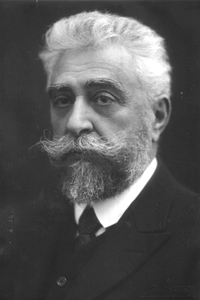The Democratic Party is a center-right party in Bulgaria led by Alexander Pramatarski. The party is a member of the European People's Party (EPP).
Constitutional Assembly elections were held in Bulgaria on 10 June 1990, with a second round for eighteen seats on 17 June. They were the first elections held since the fall of Communism the previous winter, and the first free national elections since 1931. The elections were held to elect the 7th Grand National Assembly, tasked with adopting a new (democratic) constitution. The new electoral system was changed from 400 single-member constituencies used during the Communist era to a split system whereby half were elected in single member constituencies and half by proportional representation. The result was a victory for the Bulgarian Socialist Party, the freshly renamed Communist Party, which won 211 of the 400 seats. Voter turnout was 90.3%.

Constitutional Assembly elections were held in Bulgaria on 5 June 1911. The result was a victory for the People's Party-Progressive Liberal Party alliance, which won 342 of the 410 seats. Voter turnout was 54.0%.
Parliamentary elections were held in Greece on 16 December 1843. The elected body was also tasked with drawing up a constitution, following the 3 September 1843 Revolution. The Three-Party Coalition won almost half the seats in the 243-seat Chamber.

Parliamentary elections were held in Latvia on 7 and 8 October 1922. The Latvian Social Democratic Workers' Party remained the largest party, winning 30 of the 100 seats.
Indirect Constitutional Assembly elections were held in Luxembourg on 28 July and 4 August 1918. The Party of the Right emerged as the largest party, winning 23 of the 53 seats. The Assembly was tasked with revising the constitution to democratise the country's political structure. The amendments were promulgated on 15 May 1919, introducing proportional representation and the option of holding referendums.

General elections were held in Romania between 1 and 3 March 1922. In the first stage between 1 and 3 March, seats in the Senate were elected. In the second stage between 5 and 7 March the Chamber of Deputies was elected, and in the third and final stage from 9 to 11 March, additional Senate seats were elected. The result was a victory for the governing National Liberal Party, which won 222 of the 372 seats in the Chamber of Deputies and 111 of the 148 seats in the Senate.

Parliamentary elections were held in Romania on 9 March 1975. The Front of Socialist Unity, dominated by the Romanian Communist Party and including other mass organisations, was the only organisation that contested the election. No prospective candidate could run for office without the Front's approval. The Front won all 349 seats in the Great National Assembly.

The United Labour Social Democratic Party was a political party in Bulgaria.

The Latgalian Farmers Party was a political party in Latvia representing the interests of Latgale farmers during the inter-war period.

The Democrats Union was a political party in Latvia in the inter-war period.

The Workers' Party was a political party in Latvia.

The Latgalian Christian Peasant and Catholic Party was a Christian centrist political party in Latvia during the inter-war period. It was the largest party in the Latgale region, and was led by the bishop Jāzeps Rancāns.

The Jewish National Bloc was a political alliance in Latvia in the 1920s. It consisted of Histadruth Hacionith, the Jewish National Democratic Party and Mizrachi.

The Latgale People Party was a political party in Latvia in the inter-war period.

The United Polish Parties, officially the Educational and Charity Associations of Riga and the Polish Association in Latvia, was a political alliance in Latvia for Latvian Poles during the inter-war period.

The Group of Non-Partisan Citizens was a political party in Latvia in the early 1920s.

The Non-Partisan Landless Farmers, officially the Group of Latvian Non-Partisan Landless and Small Farmers, was a political party in Latvia in the early 1920s.







